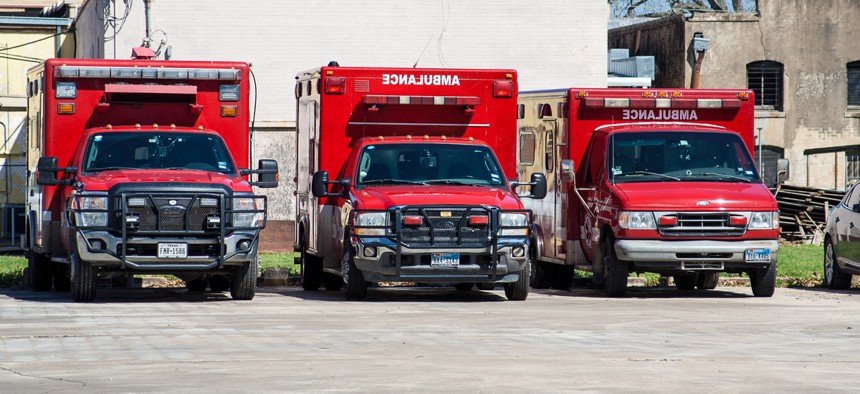A Collaborative Effort to Eliminate Return Visits to the Hospital

The Community Paramedics Program in Arlington, Texas, aims to help keep cardiac patients and others from returning to the hospital. Shutterstock

Connecting state and local government leaders
2018 NAVIGATOR AWARD WINNER: Fire Chief Don Crowson and Team, Arlington, Texas
This is the first in a series of 10 profiles on the individuals and teams who were named 2018 Route Fifty Navigator Award winners, starting with The Leaders category.
About four years ago, leaders of the EMS system in Arlington, Texas, found they were confronting a regular set of recurring problems. People getting out of the hospital were not getting the follow-up care they needed, calling 911 within days to head back to the emergency room, recalled Don Crowson, chief of the Arlington Fire Department.
In general, too many people were turning to the emergency system for health care, particularly in poorer parts of the community with less access to care.
“Keeping up with the demand has been a struggle for a lot of the EMS systems,” Crowson noted.
The department teamed up with Texas Health Arlington Memorial Hospital to try out a new approach focused on helping cardiac and stroke patients recuperate successfully in their homes, developing what they’ve called the Community Paramedic Program.
The paramedics are empowered to make decisions on their own, meeting with patients and figuring out if they are doing well or need help. They examine patients’ living conditions, look at their prescription drugs and maybe do laboratory testing and speak with doctors.
In one case, Crowson said paramedics visited a man who was discharged after six weeks in the cardiac wing of the hospital. “We went and visited him within three days, he looked very ill,” Crowson said. It turns out the man was missing a key drug, which the paramedics figured out when they called his doctor. They then got him on the right regimen. “A few days later, he was looking good and improved dramatically,” he said.
“It has been really effective at eliminating return visits to the hospital,” he said, noting that the hospital pays $110,000 annually to keep the program going.
Crowson said an internal evaluation showed the program is saving money for both the patients and hospital.
Medics who are part of the program also address some cases where people repeatedly call 911 for medical assistance, essentially using paramedics as their health providers. In those cases, the paramedics basically try to figure out what is going on with the patient and work with them so they don’t need frequent medical attention, Crowson said.
Six medics are part of the program, with someone associated with it scheduled to be on duty at all times.
At any one time, the program has about 35 patients they work with. As the medics determine a patient is stable, they graduate from the program. Crowson estimates about 350 to 400 patients have gone through it since it started in 2015.
Crowson said they are seeing interest from other communities in starting their own, similar initiatives. For Arlington, the goal going forward is to expand—they are now looking at working more with diabetic patients.
Laura Maggi is the Managing Editor of Government Executive's Route Fifty and is based in Washington, D.C.

NEXT STORY: Announcing the 10 Winners of the 2018 Route Fifty Navigator Awards





